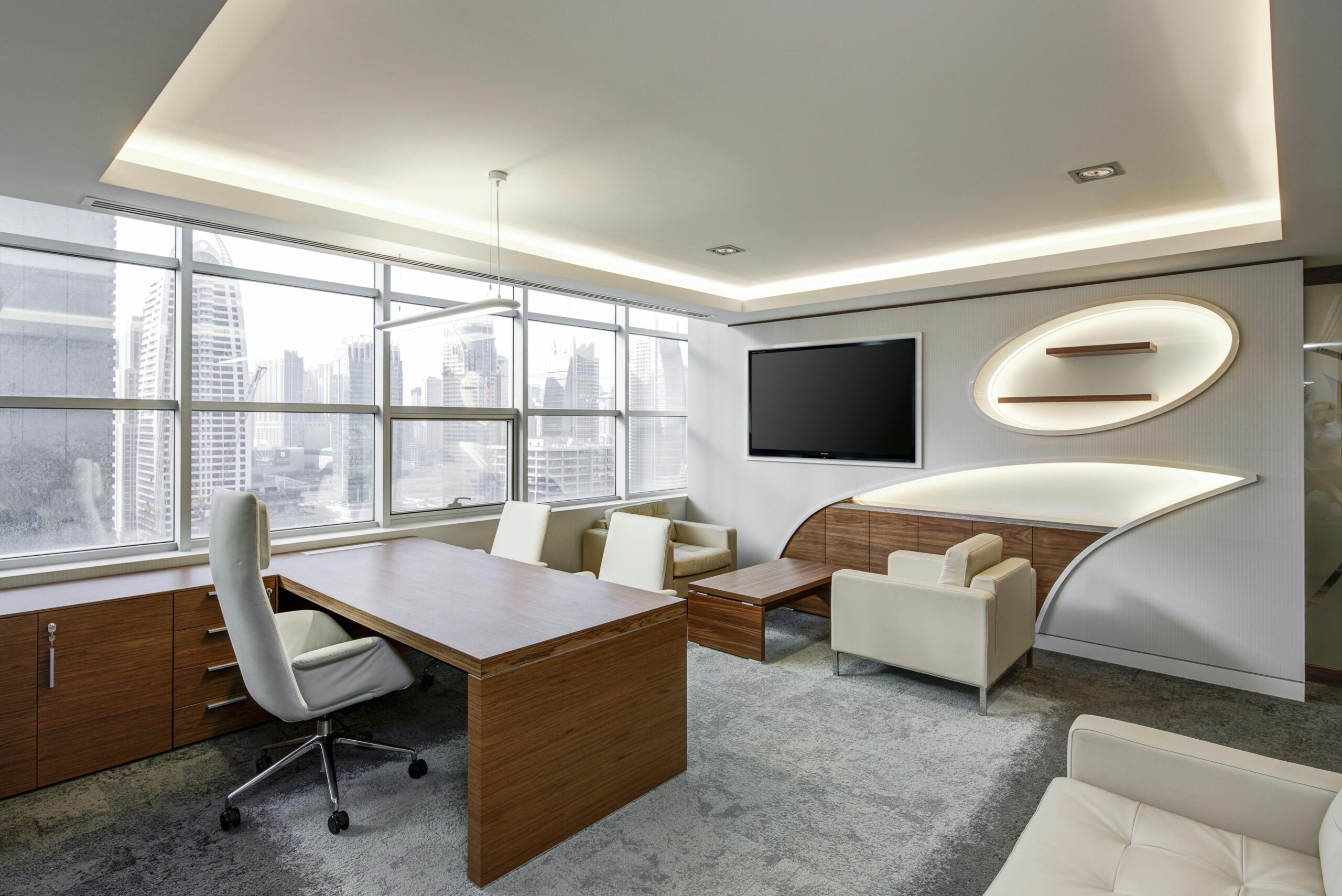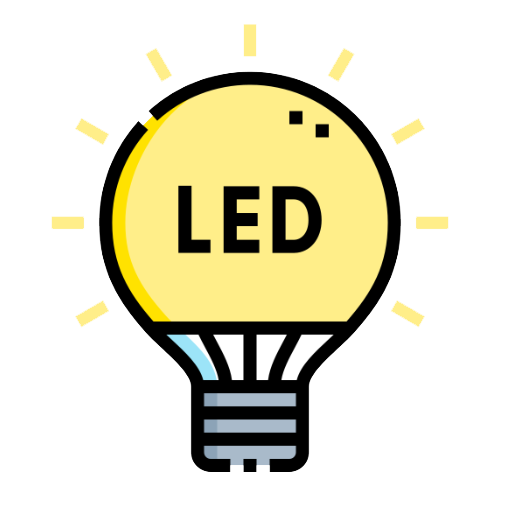
Your Guide to Smarter, Sustainable Lighting


About Us
Lighting That Works Smarter, Lasts Longer
Lighting is more than just a way to brighten a room—it’s about energy efficiency, comfort, ambiance, and innovation. Whether you’re looking to upgrade your home, improve office lighting, or integrate smart technology into your space, LED panels are the perfect solution.
Brighter Spaces, Smarter Choices
- The Ultimate Guide to Choosing the Right LED Panel for Your Space
 by MarkIn today’s world, LED panels have become a popular lighting choice for both residential and commercial spaces. They offer energy efficiency, long-lasting performance, and a sleek design that can enhance any environment. However, with so many options available, choosing the right LED panel can be a daunting task. In this guide, we’ll explore the key factors to consider when selecting an LED panel to ensure you make an informed decision. ## **Why Choose LED Panels?** LED panels are a modern lighting solution that provides several benefits: – **Energy Efficiency**: LED panels consume significantly less power compared to traditional lighting, which can lead to substantial savings on your electricity bill. – **Longevity**: With an average lifespan of up to 50,000 hours, LED panels require less frequent replacements. – **Design Flexibility**: These panels come in various sizes, shapes, and colors, allowing for creative lighting designs. – **Environmentally Friendly**: LEDs do not contain harmful chemicals and are 100% recyclable. ## **Factors to Consider When Choosing an LED Panel** ### **1. Purpose and Location** Before purchasing an LED panel, consider where and how it will be used: – **Residential Use**: For homes, consider panels that offer a warm, inviting light. Dimmable options can add versatility to living areas and bedrooms. – **Commercial Use**: In offices or retail spaces, panels with cooler, brighter light can enhance visibility and productivity. ### **2. Size and Shape** LED panels come in various sizes and shapes, so it’s essential to choose one that fits your space: – **Standard Sizes**: Common sizes include 600x600mm and 1200x600mm, but custom sizes are also available. – **Shapes**: While rectangular and square are most common, round and other geometric designs can add a unique touch. ### **3. Color Temperature** The color temperature of an LED panel affects the ambiance of a space: – **Warm White (2700K-3000K)**: Ideal for creating a cozy and relaxing atmosphere. – **Cool White (4000K-5000K)**: Suitable for workspaces, as it mimics natural daylight and enhances concentration. – **Daylight (5000K-6500K)**: Perfect for areas needing bright, clear illumination, such as garages or kitchens. ### **4. Lumen Output** The brightness of an LED panel is measured in lumens. Consider the following when selecting brightness: – **Low Lumens (2000-3000 lumens)**: Suitable for smaller rooms or as accent lighting. – **Medium Lumens (3000-5000 lumens)**: Great for medium-sized rooms and general lighting. – **High Lumens (5000+ lumens)**: Necessary for large spaces requiring bright illumination. ### **5. Installation Type** LED panels can be installed in different ways, depending on your needs: – **Recessed Installation**: Ideal for a sleek, flush finish in suspended ceilings. – **Surface Mounted**: Perfect for ceilings without space for recessed fittings. – **Suspended**: Offers a modern look with adjustable height options. ## **Additional Features to Consider** – **Dimmable Options**: Flexibility to adjust brightness levels to suit different activities. – **Smart Controls**: Integration with smart home systems for remote control and automation. – **Emergency Backup**: Ensures lighting remains functional during power outages. ## **Conclusion** Choosing the right LED panel involves considering various factors such as location, size, color temperature, and installation type. By understanding your specific needs and preferences, you can select a panel that enhances your space while providing energy-efficient, long-lasting lighting. At LED Panel Depot, we offer a wide range of LED panels to suit every requirement. Whether you’re upgrading your home lighting or outfitting a commercial space, our selection ensures you find the perfect solution. Illuminate your world with the brilliance and efficiency of LED panels today!
by MarkIn today’s world, LED panels have become a popular lighting choice for both residential and commercial spaces. They offer energy efficiency, long-lasting performance, and a sleek design that can enhance any environment. However, with so many options available, choosing the right LED panel can be a daunting task. In this guide, we’ll explore the key factors to consider when selecting an LED panel to ensure you make an informed decision. ## **Why Choose LED Panels?** LED panels are a modern lighting solution that provides several benefits: – **Energy Efficiency**: LED panels consume significantly less power compared to traditional lighting, which can lead to substantial savings on your electricity bill. – **Longevity**: With an average lifespan of up to 50,000 hours, LED panels require less frequent replacements. – **Design Flexibility**: These panels come in various sizes, shapes, and colors, allowing for creative lighting designs. – **Environmentally Friendly**: LEDs do not contain harmful chemicals and are 100% recyclable. ## **Factors to Consider When Choosing an LED Panel** ### **1. Purpose and Location** Before purchasing an LED panel, consider where and how it will be used: – **Residential Use**: For homes, consider panels that offer a warm, inviting light. Dimmable options can add versatility to living areas and bedrooms. – **Commercial Use**: In offices or retail spaces, panels with cooler, brighter light can enhance visibility and productivity. ### **2. Size and Shape** LED panels come in various sizes and shapes, so it’s essential to choose one that fits your space: – **Standard Sizes**: Common sizes include 600x600mm and 1200x600mm, but custom sizes are also available. – **Shapes**: While rectangular and square are most common, round and other geometric designs can add a unique touch. ### **3. Color Temperature** The color temperature of an LED panel affects the ambiance of a space: – **Warm White (2700K-3000K)**: Ideal for creating a cozy and relaxing atmosphere. – **Cool White (4000K-5000K)**: Suitable for workspaces, as it mimics natural daylight and enhances concentration. – **Daylight (5000K-6500K)**: Perfect for areas needing bright, clear illumination, such as garages or kitchens. ### **4. Lumen Output** The brightness of an LED panel is measured in lumens. Consider the following when selecting brightness: – **Low Lumens (2000-3000 lumens)**: Suitable for smaller rooms or as accent lighting. – **Medium Lumens (3000-5000 lumens)**: Great for medium-sized rooms and general lighting. – **High Lumens (5000+ lumens)**: Necessary for large spaces requiring bright illumination. ### **5. Installation Type** LED panels can be installed in different ways, depending on your needs: – **Recessed Installation**: Ideal for a sleek, flush finish in suspended ceilings. – **Surface Mounted**: Perfect for ceilings without space for recessed fittings. – **Suspended**: Offers a modern look with adjustable height options. ## **Additional Features to Consider** – **Dimmable Options**: Flexibility to adjust brightness levels to suit different activities. – **Smart Controls**: Integration with smart home systems for remote control and automation. – **Emergency Backup**: Ensures lighting remains functional during power outages. ## **Conclusion** Choosing the right LED panel involves considering various factors such as location, size, color temperature, and installation type. By understanding your specific needs and preferences, you can select a panel that enhances your space while providing energy-efficient, long-lasting lighting. At LED Panel Depot, we offer a wide range of LED panels to suit every requirement. Whether you’re upgrading your home lighting or outfitting a commercial space, our selection ensures you find the perfect solution. Illuminate your world with the brilliance and efficiency of LED panels today! - The Day My AC Died While Working from Home – And How the Right Technician Saved the Dayby user
Working from home has its perks—no commuting, a flexible schedule, and the comfort of your own space. But when my air conditioner died on one of the hottest days in Weston, all of those perks quickly vanished. What started as a productive morning quickly turned into a sweaty, frustrating mess.
I had no choice but to search for a local AC company, hoping I’d find someone reliable who could come out quickly. I searched for ac repair weston fl and thankfully, I got lucky. The technician who arrived wasn’t just knowledgeable—he was friendly, professional, and willing to take the time to teach me how to maintain my AC so I wouldn’t have to deal with another breakdown anytime soon.
A Lifesaver in the Florida Heat
I called a local AC repair service, and to my surprise, they scheduled someone to come out the same day. I braced myself for what I assumed would be an expensive and complicated repair, but from the moment the technician arrived, I knew I was in good hands.
He was professional, explained everything in detail, and reassured me that my unit wasn’t beyond saving. Within a short time, he had diagnosed the issue and got to work. I could tell he had years of experience—his efficiency and confidence in handling the repair made me feel at ease.
Not only did he fix the issue, but he also took the time to explain what went wrong and what I could do to prevent future breakdowns. I was expecting a hefty bill, but to my surprise, the price was very reasonable. If I could give this guy ten stars, I would!
The Importance of AC Maintenance
During the repair, I got an unexpected lesson in AC maintenance. I’ve always just assumed my AC would work when I needed it, but I learned that simple upkeep can save money, reduce energy bills, and extend the life of the system. Here are some basic maintenance tips I picked up from my technician that can help keep an AC unit running efficiently:
1. Change the Air Filter Regularly
This was the number one tip he emphasized. A clogged air filter makes the system work harder, leading to higher energy bills and potential breakdowns. He recommended changing the filter every 1-3 months, depending on usage and the amount of dust in my home.
2. Keep the Outdoor Unit Clean
I never thought much about the outdoor condenser unit, but he explained that keeping it free from debris like leaves, dirt, and grass clippings allows for better airflow. He suggested hosing it down occasionally to keep it clean.
3. Check the Thermostat Settings
Apparently, my thermostat settings could be costing me more than necessary. He recommended setting it to a steady, efficient temperature and using a programmable thermostat to adjust the temperature when I’m not home to save energy.
4. Inspect and Clean the Vents
Blocked vents reduce airflow, making the system work harder. He showed me how to check and clean the vents around my home to keep air circulating properly.
5. Schedule Regular Professional Maintenance
While there are things I can do myself, he recommended having a professional check the system at least once a year. They can catch small issues before they become major (and expensive) problems.
Taking Control of My AC’s Health
After that visit, I decided to take AC maintenance more seriously. Now, I handle some of the smaller tasks myself, like changing the filter and cleaning the vents, but I still rely on my new go-to AC company for professional maintenance and any major repairs.
It’s reassuring to know that if something ever goes wrong again, I have a reliable team to call. I couldn’t be happier with the service I received—friendly, professional, and genuinely interested in helping me save money in the long run.
If you’re in Weston and your AC ever breaks down, don’t panic. With the right technician, not only can your system be fixed quickly, but you might also get a crash course in AC maintenance that will save you headaches (and money) in the future!
- Smart LED Lighting: More Than Convenience – A Smarter Way to Save Energy & Personalize Your Space
 by Mark
by MarkWhen I first started exploring smart LED lighting, I was mainly interested in the convenience factor. The idea of controlling my lights from my phone or using voice commands sounded like something out of a futuristic movie. But as I integrated smart lighting into my home and workspace, I quickly realized it wasn’t just about turning lights on and off without getting up—it was about saving energy, reducing waste, and personalizing my environment in ways I never thought possible.
Smart LED lighting has completely changed the way I think about energy efficiency and lighting control. It has allowed me to cut down on electricity bills, create custom lighting scenes, and even improve productivity and relaxation. If you’re considering making the switch, here’s why smart LED lighting is more than just a convenience—it’s a game-changer for optimizing energy use and creating a personalized space.
1. Smart Lighting Saves Energy Without Compromising Brightness
One of the biggest misconceptions I had before switching to smart LED lighting was that automated and customizable lighting might use more energy. But the reality is the opposite—smart LED systems actually help reduce energy consumption in several ways:
✅ Dimming Capabilities – Unlike traditional bulbs, smart LED panels allow me to adjust brightness levels based on my needs. For example, I don’t need full brightness while watching TV or working on my laptop, so I set my lights to 50% brightness, cutting down on energy use without sacrificing visibility.
✅ Motion Sensors & Automation – I used to forget to turn off lights when leaving a room. With motion sensors and smart scheduling, my lights automatically turn off when a room is unoccupied, saving electricity effortlessly.
✅ Energy Monitoring Features – Some smart LED systems, like those compatible with Google Home, Amazon Alexa, or Apple HomeKit, allow me to track my energy usage. Seeing how much energy I’m using has encouraged me to make smarter choices, like reducing unnecessary lighting.
By using customized schedules, dimming, and automation, I’ve noticed a significant decrease in my electricity bill—all while keeping my home well-lit and comfortable.
2. Personalized Lighting for Every Mood & Activity
Before using smart LED lighting, I didn’t think much about how lighting affects my mood, focus, and relaxation. But once I started experimenting with different settings, I realized how much personalized lighting enhances my living and working environment.
Creating the Perfect Ambiance
💡 Warm & Cozy Evenings – I love winding down in the evening with warm-toned lighting that mimics candlelight. It creates a relaxing atmosphere and signals to my brain that it’s time to unwind before bed.
💡 Energizing Mornings – In the morning, I set my smart LED panels to bright, cool-toned light, which helps me wake up faster and feel more alert. It’s amazing how much the right lighting can boost energy levels.
💡 Productivity Mode – For work, I adjust my lighting to neutral daylight tones, which reduces eye strain and keeps me focused during long hours at my desk.
With pre-set lighting scenes, I can instantly switch from work mode to relaxation mode with a tap on my phone or a simple voice command. This level of personalization has completely transformed the way I experience lighting.
3. Smart LED Lighting Enhances Home & Workplace Efficiency
Beyond homes, smart LED lighting is making a huge impact in offices and commercial spaces. I’ve seen businesses optimize lighting to reduce costs and improve employee productivity.
🏢 In the workplace, smart LED systems can:
✔ Adjust automatically based on occupancy and daylight levels.
✔ Create a better work environment with optimal brightness and color temperature.
✔ Cut down on operational costs with energy-efficient lighting schedules.At home, I use smart LED automation to keep my space efficient:
🏠 For example, my smart lighting setup:
✔ Gradually dims in the evening to help me wind down.
✔ Turns on automatically when I arrive home.
✔ Shuts off all lights at bedtime without me having to check every room.By combining efficiency and automation, smart LED lighting reduces waste while improving convenience—a win-win.
4. Integrating Smart LED Lighting with Home Automation Systems
One of the best things about smart LED lighting is how easily it integrates with other smart home devices. I’ve connected my lights to Google Home, allowing me to control everything with voice commands or routines.
🔹 “Hey Google, good morning” – My lights turn on gradually, simulating sunrise.
🔹 “Alexa, movie time” – The lights dim automatically for a cozy movie experience.
🔹 “Siri, turn off all lights” – Instantly shuts down all unnecessary lighting before bed.This level of automation makes daily routines effortless and ensures that I’m never wasting energy on unused lighting.
5. The Future of Smart LED Lighting: What’s Next?
As technology evolves, smart lighting is getting even more advanced. Some exciting innovations on the horizon include:
🚀 AI-Powered Adaptive Lighting – Systems that learn your habits and adjust lighting automatically.
🚀 Solar-Powered Smart LEDs – Combining renewable energy with automation for ultimate efficiency.
🚀 Biometric Lighting Adjustments – Lights that adjust based on your heart rate or activity levels.The future of smart LED lighting isn’t just about making life easier—it’s about creating a more energy-conscious and customizable environment.
Final Thoughts: More Than Just Convenience
Before I switched to smart LED lighting, I thought it was just a luxury feature for tech enthusiasts. Now, I realize it’s an essential tool for optimizing energy, improving well-being, and making everyday life more efficient.
By incorporating automation, energy tracking, and personalized lighting settings, smart LEDs have helped me:
✔ Lower my electricity bill while maintaining a bright home.
✔ Improve my sleep, focus, and relaxation with customized lighting scenes.
✔ Create a smarter, more efficient living space that adapts to my needs.If you’re thinking about upgrading your lighting, smart LEDs are absolutely worth it—not just for the convenience, but for the long-term benefits of energy efficiency and personalization.
What’s your favorite smart lighting feature? Let’s discuss in the comments! 💡✨
- Maintenance Best Practices – How to Extend the Lifespan of Your LED Lights
 by Mark
by MarkOne of the reasons I switched to LED lighting was because of its long lifespan and energy efficiency. Unlike traditional bulbs that burn out quickly, LEDs can last up to 50,000 hours or more—but only if they’re properly maintained. I’ve learned that with a few simple maintenance practices, I can extend the life of my LED lights and keep them performing at their best for years to come.
If you’ve invested in LED panels, bulbs, or smart lighting systems, you’ll want to make sure they last as long as possible. Here are some best practices I follow to keep my LED lights working efficiently.
1. Keep Your LED Lights Clean
I didn’t realize how much dust and dirt could affect LED performance until I noticed some of my lights dimming over time. Dust and debris can accumulate on light panels, bulbs, and fixtures, reducing brightness and causing overheating.
How to Clean LED Lights Properly:
✔ Turn off the power first – Always unplug or switch off the light before cleaning.
✔ Use a dry microfiber cloth – Wipe the surface gently to remove dust without scratching.
✔ For tougher grime, use a damp cloth – Avoid harsh chemicals, and never spray water directly onto LED fixtures.
✔ Check ventilation areas – If your LED panels have air vents, keep them dust-free to prevent overheating.Regular cleaning—about once every few months—ensures that your LEDs stay bright and efficient.
2. Avoid Overheating: Proper Ventilation is Key
One mistake I see people make is installing LED panels in tight, enclosed spaces where heat can’t escape. While LEDs don’t produce as much heat as incandescent bulbs, they still need proper airflow to prevent damage.
Tips to Prevent LED Overheating:
🔹 Don’t install LED panels too close to insulation – Trapped heat can shorten lifespan.
🔹 Ensure good air circulation around fixtures – Avoid blocking ventilation holes.
🔹 Use compatible dimmers – Some dimmers can overwork LEDs, leading to heat buildup.If an LED feels unusually hot to the touch, check if it’s installed correctly or if ventilation needs improvement.
3. Use High-Quality LED Drivers & Power Supplies
I’ve learned that cheap LED drivers can lead to flickering, overheating, and early failure. The driver is the power source for your LED lights, and a low-quality driver can wear out quickly.
How to Choose the Right LED Driver:
✔ Look for brand-name, energy-efficient drivers.
✔ Ensure the driver matches the voltage and wattage of your LED panel.
✔ If using smart LEDs, use a power supply compatible with dimming features.Upgrading to a high-quality LED driver has helped my lights last much longer without flickering or dimming.
4. Turn Off Lights When Not in Use
One of the biggest myths I used to believe was that leaving LED lights on all the time doesn’t affect lifespan. While LEDs are energy-efficient, they still experience wear and tear over time.
Best Practices for LED Usage:
💡 Use motion sensors or timers – Automate lighting in rooms that aren’t always occupied.
💡 Turn off lights when leaving a room – Even LEDs need breaks to avoid unnecessary strain.
💡 Use smart lighting controls – Adjust brightness levels to extend longevity.A small habit like switching off unused LEDs can significantly extend their lifespan.
5. Protect LEDs from Power Surges
One of the worst things that can happen to LED lights is a power surge. A sudden spike in electricity can damage LED drivers and shorten the lifespan of your lighting system.
How to Prevent Power Surge Damage:
🔹 Use surge protectors – Especially for LED panels and smart lighting systems.
🔹 Avoid frequent on/off switching – Turning LEDs on and off rapidly can strain the circuitry.
🔹 Check for loose wiring – Poor electrical connections can cause voltage fluctuations.After installing surge protectors in my home, I noticed my LEDs last longer and perform more consistently.
6. Install LEDs in the Right Environment
Not all LED lights are designed for every environment. Some LEDs work great indoors but can fail quickly in outdoor or high-humidity areas.
Choosing the Right LED for the Right Space:
✔ Use weatherproof LEDs for outdoor lighting.
✔ Opt for moisture-resistant panels in kitchens and bathrooms.
✔ Check the IP rating – Higher IP ratings mean better protection against dust and water.Using the right LED for the right conditions prevents early failures and maximizes lifespan.
Final Thoughts: Keep Your LEDs Working for Years
LED lights are built to last, but proper care and maintenance can make a huge difference. By keeping LEDs clean, well-ventilated, and protected from power surges, I’ve extended the lifespan of my lighting by years.
Following these simple practices will help you get the most out of your LED investment, keeping your home or office bright, energy-efficient, and worry-free.
How do you maintain your LED lights? Let’s discuss in the comments! 💡✨
- Smart Lighting Trends – How Automation is Shaping the Future of Home and Office Lighting
 by Mark
by MarkWhen I first started exploring smart lighting, I was amazed at how much technology has evolved beyond the simple on/off switch. Today, lighting is no longer just about illumination—it’s about automation, energy efficiency, and personalization. Whether you’re at home or in an office, smart lighting systems are transforming the way we interact with our spaces.
Over the past few years, I’ve watched smart lighting go from a luxury feature to an essential part of modern homes and workplaces. As voice assistants, motion sensors, and remote controls become the norm, it’s clear that automation is shaping the future of lighting. Here’s a look at some of the biggest trends in smart lighting and how they’re changing the way we light up our spaces.
1. Voice-Controlled Lighting for Hands-Free Convenience
One of the most exciting developments in smart lighting is voice control. Devices like Amazon Alexa, Google Assistant, and Apple’s Siri have made it easier than ever to adjust lighting with a simple command.
I remember when I first set up voice-controlled LED panels in my home—it felt like something straight out of a sci-fi movie. Instead of walking over to a switch, I could just say:
- “Alexa, dim the lights to 50%.”
- “Hey Google, turn on the kitchen lights.”
- “Siri, change the living room lights to warm white.”
The convenience is game-changing, especially when your hands are full or when you want to create a specific mood without manually adjusting switches. This feature is also great for accessibility, allowing people with mobility challenges to control lighting with ease.
2. Motion Sensors & Adaptive Lighting for Efficiency
Another smart lighting trend I love is motion-activated lighting. I installed motion-sensor LED panels in my hallway and bathroom, and it completely changed my nighttime routine. Now, when I walk into a dark room, the lights automatically turn on and then turn off when I leave—saving energy in the process.
This trend is especially useful in offices and commercial spaces, where motion sensors:
✔ Automatically turn lights on when someone enters a room.
✔ Reduce energy waste by turning off lights when a space is unoccupied.
✔ Help lower electricity costs in large office buildings.Some advanced smart lighting systems even adjust brightness based on natural daylight levels, ensuring the perfect amount of light without unnecessary energy consumption.
3. Color-Tunable & Circadian Rhythm Lighting
I used to think lighting was just about brightness, but now I know that color temperature plays a big role in mood, focus, and well-being.
Many smart lighting systems offer color-tunable LED panels, allowing you to adjust warm or cool tones based on the time of day. This is known as circadian lighting, which mimics the natural light cycle to improve sleep patterns and productivity.
🌅 Morning: Bright, cool lighting to help wake you up and boost focus.
🌇 Evening: Warm, dim lighting to relax and prepare for sleep.This is becoming a huge trend in offices, as businesses realize that lighting can enhance employee productivity and reduce fatigue. Many companies are installing smart lighting systems that sync with circadian rhythms to create a more natural work environment.
4. App-Controlled & Remote Access Lighting
One of my favorite smart lighting features is the ability to control lights from my phone. Whether I’m home or away, I can adjust brightness, change colors, and even set schedules using an app.
📱 Forgot to turn off the lights before leaving? No problem—just turn them off remotely.
📱 Want to set the perfect movie night ambiance? Customize colors and dimming levels instantly.
📱 Need security lighting while on vacation? Schedule lights to turn on and off at certain times.For businesses, app-controlled lighting allows office managers to control multiple locations from a single dashboard, ensuring lights are only used when needed.
5. Smart LED Panels & Energy Efficiency
At the heart of smart lighting is energy efficiency. Traditional lighting wastes energy, but smart LED panels are designed to reduce electricity consumption while providing superior illumination.
💡 LEDs use up to 80% less energy than incandescent bulbs.
💡 Smart lighting systems optimize usage, further cutting down energy costs.
💡 Integration with solar panels and renewable energy sources makes lighting even more sustainable.In the near future, we’ll likely see more AI-powered lighting systems that automatically adjust based on weather, occupancy, and energy usage patterns.
Final Thoughts: The Future of Smart Lighting
Smart lighting is more than just a convenience—it’s a revolution in how we experience our living and working spaces. From voice control and motion sensors to circadian lighting and energy-efficient LED panels, automation is making lighting smarter, more efficient, and more customizable than ever.
For me, upgrading to smart lighting has not only saved energy but also improved my daily routines. Whether you’re setting up a smart home or looking to enhance office efficiency, the future of lighting is bright, automated, and endlessly innovative.
What are your thoughts on smart lighting? Let’s discuss in the comments! 💡✨